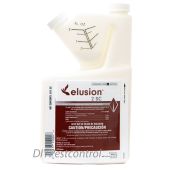Carpenter Ant Control Products

Combat carpenter ants effectively with our top-tier carpenter ant control products. Our range of products, carefully curated for maximum efficiency and safety, ensures a pest-free home. Don’t let carpenter ants damage your property. Take action now with trusted ant control products from DIY Pest Control!
1. Baiting
- Find the trail
- Apply both sweet and a protein bait to the trail
- Carpenter ants go on both sweet and protein cycles so it is important to treat for both
-Why bait?
- only treating indoors
- can not spray around the perimeter of your structure
- easy to apply
2. Spraying Non-Repellent Insecticides
- apply to the perimeter of your structure
- two feet up and two feet out from the base your structure
- apply around any entry point (door frame, window sill, AC unit, etc.)
-Why spray?
- the most effective at eliminating and preventing Carpenter Ant problem
- Longer residual
3. Hollow Spaces and Walls
- look for damage in areas such as window sills, hollow doors, behind baseboards and other hollow areas
- drill holes (2-6 feet) on either side of nest and apply your dust, aerosol or foam
- do not use insecticides in voids
Recommended Treatment
- use a combination of baiting and spraying
- More Information: How to Get Rid Of Carpenter Ants
Carpenter Ant Treatment Methods
1. Baiting
- Find the trail
- Apply both sweet and a protein bait to the trail
- Carpenter ants go on both sweet and protein cycles so it is important to treat for both
-Why bait?
- only treating indoors
- can not spray around the perimeter of your structure
- easy to apply
2. Spraying Non-Repellent Insecticides
- Apply to the perimeter of your structure
- Two feet up and two feet out from the base your structure
- Apply around any entry point (door frame, window sill, AC unit, etc.)
-Why spray?
- The most effective at eliminating and preventing Carpenter Ant problem
- Longer residual
3. Hollow Spaces and Walls
- Look for damage in areas such as window sills, hollow doors, behind baseboards and other hollow areas
- Drill holes (2-6 feet) on either side of nest and apply your dust, aerosol or foam
- Do not use insecticides in voids
Recommended Treatment
- Use a combination of baiting and spraying



















